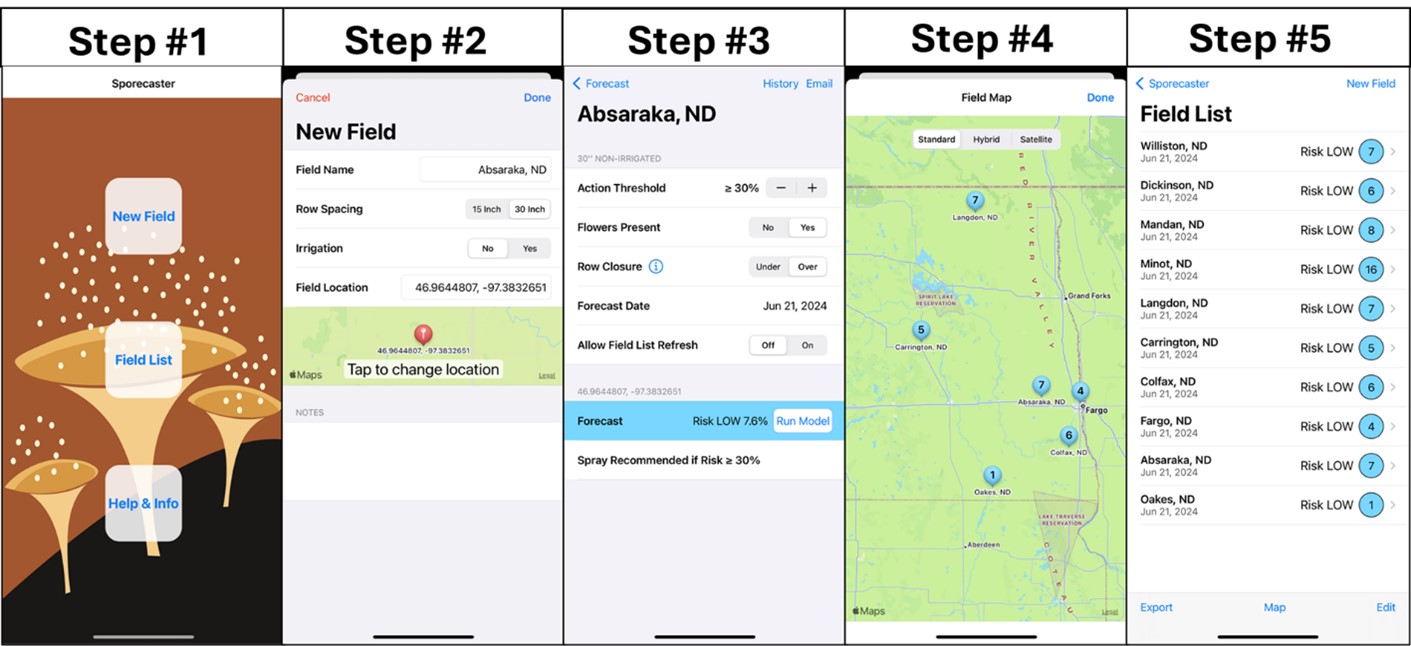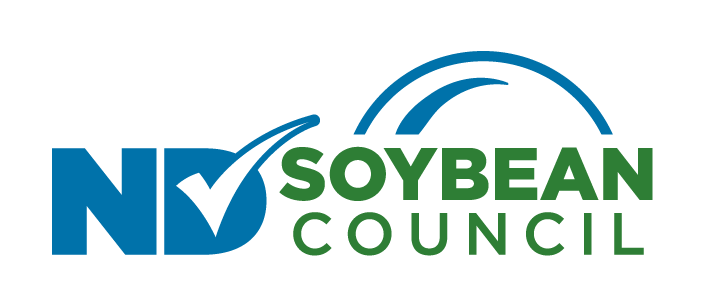
Integrated Disease, Weed & Insect Management
White Mold
White mold is a major disease affecting soybeans across the Northern Midwest region of the United States, particularly in North Dakota, where it consistently ranks as one of the top yield-reducing diseases. This disease is caused by the fungal pathogen Sclerotinia sclerotiorum, which also affects other broadleaf crops in the region, including sunflower, canola, dry bean, and pulses.

Figure 1. A) A soybean plant infected with white mold with visible fungal growth, bleaching of the main stem, and the development of new sclerotia. B) A North Dakota soybean field with widespread white mold development leading to premature plant death and flagging of dead plants.
The fungus survives in fields for many years through sturdy structures called sclerotia, which resemble small rodent droppings. During the growing season, these sclerotia germinate to form small, tan-colored mushrooms known as apothecia. The development of apothecia is triggered by the canopy closure of the soybean crop, especially under cool, moist conditions. These apothecia release microscopic spores into the soybean canopy, with a single apothecium capable of releasing up to one million spores! Infection occurs when these spores land on dead or senescing soybean flowers attached to the stems, making management during these flowering growth stages critical.

Figure 2. White mold apothecia in the under canopy of a soybean crop from the 2023 growing season. Compared to a dime, it is evident how small these apothecia are. This one bunch of apothecia may produce millions of spores that could lead to white mold infections.
After infection, the fungus begins to develop within the soybean plant without showing visible symptoms. Two to three weeks later, small tan lesions appear on the stems, often near flower nodes where pods are forming. White fungal growth resembling cotton balls may also develop on the stem. As the infection progresses, the main stem may become girdled, causing the plant to wilt prematurely. At the end of the season, new sclerotia are formed and released back into the field during harvest, serving as inoculum for the next season.
Years of research have led to improved strategies for controlling white mold. One effective method is applying foliar fungicides during the flowering periods. Research by Dr. Michael Wunsch at the Carrington REC has shown that the most influential time for application is either at full flowering (R2) or near 100% canopy closure. However, not every year provides the optimal conditions for white mold development, as the pathogen requires cool to moderate temperatures and consistent moisture during these growth stages. Making fungicide applications when conditions are not conducive for disease development can result in unnecessary inputs and costs.
To address this, predictive models have been developed to understand the environmental conditions required for white mold infection. These models are integrated into a smartphone app called Sporecaster. The app allows farmers to input field-specific data based on map location or GPS coordinates, including row spacing and irrigation use. Farmers then indicate if the soybeans are flowering and if canopy closure has occurred. By running the model, farmers receive a risk level for white mold infection.

Figure 3. Progression of using the Sporecaster Tool. Step 1: Click on the ‘New Field’ to create a new entry. Step 2: Enter the field name, the row spacing, irrigation status, and to enter the field location. Row spacing is labeled as wide and narrow such that is planted into 22-inch rows, you would click ‘30 inch’. Anything planted in less than 15-inch rows will click ’15 inch’. Step 3: Adjust the threshold to 30% in non-irrigated fields, indicate whether flowers are present and if row closure has occurred. Then click ‘Run Model’ and evaluate the risk level provided. Step 4: Look at locations on the map function. Step 5: Look at a list of all locations and their daily risk level.
Due to differences in microenvironments between irrigated and non-irrigated fields, the app uses two distinct models with different action thresholds: 10% for irrigated fields and 40% for non-irrigated fields. This tool, developed and released in 2018, initially used data from soybean production systems around the Great Lakes region, excluding the Northern Great Plains, such as North Dakota.
Research funded by the North Dakota Soybean Council has aimed to validate these models and adjust thresholds as needed for the Northern Great Plains. Preliminary research from 2023 suggests lowering the action threshold to 30% for non-irrigated fields in North Dakota. This adjustment will help farmers apply fungicides more accurately, preventing the development of severe white mold outbreaks.
Sporecaster has also been integrated into another app called Field Prophet which allows for the evaluation of additional predictive models and provides a 7-day forecast into the future for disease risk. Both Sporecaster and Field Prophet are available for free to farmers for use in their operations. Sporecaster can be found here, and Field Prophet can be found here.
For more information, please reach out to Dr. Wade Webster, Assistant Professor and Extension Soybean Pathologist at NDSU.
Walster Hall 305
1402 Albrecht Blvd.
Fargo, ND 58102
Email: richard.webster@ndsu.edu
Phone: 701-231-7057
